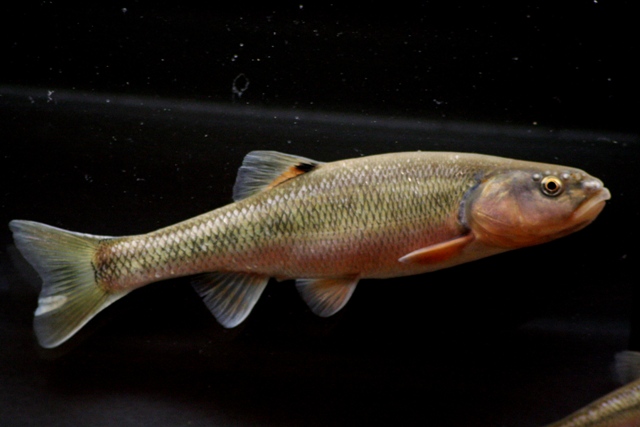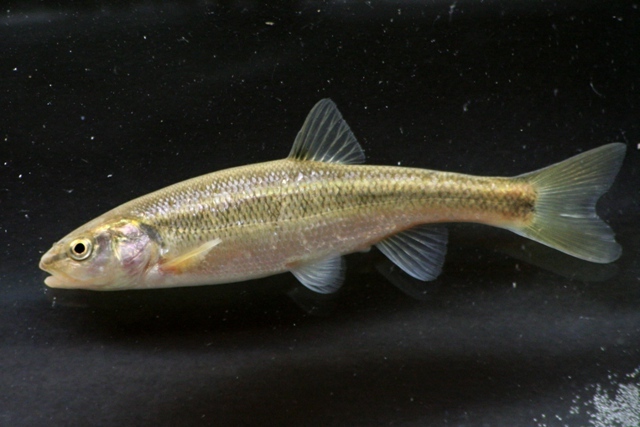Creek Chub
(Semotilus atromaculatus)


The creek chub is Ohio's largest native cyprinid species and is often caught by anglers. The top photo is a breeding male and the photo to the right is a female.
Description
Creek chubs have a thick body and a broad head. Their mouth is large with the back end of the upper jaw extending beyond the front edge of the eye. They also have a small flap-like barbel that is often hidden in the grove between the upper jaw and the rest of the head, slightly in front of the back of the upper jaw. They have a dark spot on the front edge of the dorsal fin where it attaches to their body. They also have a dark stripe that runs the full length of their body. This stripe is darker on young fish and fish caught in clear water, it can be faint or absent on large adults, especially males. Large adult breeding males have a rusty orange red color to their cheeks, lips, and much of the belly and lower fins. They may also show some of this color on their dorsal fin. Breeding males also have a dark bar just behind the gills and have many large tubercles (horn like bumps) on the top of their head. The similar river and hornyhead chubs have slightly smaller mouths that end in front of the eye, no dark base at the front of the dorsal fin, and have dark edges to their scales giving them a crosshatched pattern to their body.
Habitat and Habits
Creek chub are one of the most common fish in Ohio and are found throughout the state. They are most abundant in small streams where they are often the top predator. This is a tolerant species that can withstand a wide variety of water conditions.
Reproduction and Care of the Young
Creek chubs spawn in early spring when water temperatures reach 55 degrees Fahrenheit. The males select spawning sites in small streams in smooth water with gravel substrate just above or below a riffle. At these sites, males dig a pit by sweeping their tail against the stream bed and moving gravel away with their mouth. After spawning occurs they fill in the pit, burying the eggs, with small pebbles creating a mound. The male will then dig a new pit immediately downstream of the pile of pebbles. As spawning continues this activity creates a ridge of pebbles that can be a foot across and several feet long. Many other smaller species of fish will also sneak in and spawn in the nest of the chub taking advantage of the way the male creek chub aggressively defends the nest, which insures their eggs are protected as well.